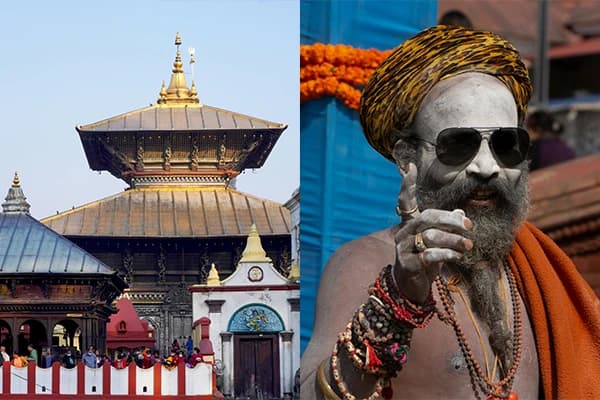The beauty of Mount Annapurna
Mt. Annapurna is the 10th highest mountain in the world. The impressive height adds to the beauty of the snow-clad mountain, which has stories of heroism, resilience, and mystery. Challenges that make the ascent of Annapurna more beautiful will come after cultural and spiritual attractions.
- Exploration and conquest of the summit
Mt. Annapurna was the first peak above 8,000 m to be climbed, and it paved the way for another mountaineer to summit the peak. Maurice Herzog and Louis Lachenal climbed the peak for the very first time, along with other French expeditors named Lionel Terray, Gaston Rébuffat, Marcel Ichac, Jean Couzy, Marcel Schatz, Jacques Oudot, and Francis de Noyelle, on June 3, 1950.
Marchel Ichac also made a documentary of their climb with the title, Victoire sur l'Annapurna. The ratio of deaths to successful summit survival is highest in Mount Annapurna. The success rate of the Mount Annapurna climb is only 33%, which means that for every 100 people who attempt the climb, 33 do not come back. According to the data, 365 people have reached the summit of Annapurna I, while 72 have died in the attempt as of now.
- Spiritual and cultural significance
The spiritual and cultural significance of the Mt. Annapurna area added beauty to the dangerous part of the summit. There are temples and monasteries which are significant to the Hindu and Buddhist people. Muktinath is one of the holy temples where pilgrims from all around the world visit to wash their sins. Within the Annapurna region, there are many Buddhist influences in higher regions than in lower altitudes.
- Impact on global tourism and mountaineering
After Mount Everest, Mt Annapurna has become a popular destination for mountaineers. Mountaineers from all around the world have been climbing these peaks for adventure and to spend their vacation. Every year, the rate of climbing Mt. Annapurna has been increasing, which directly helps the development of that region and the growth of tourism.
History of Mt. Annapurna
The Annapurna region's exploration began in the early 20th century. In 1950, Maurice Herzog's expedition reached the top of the most perilous mountain in the world. Maurice and Louis Lachenal's success was their first attempt on Mount Annapurna. Since then, the Nepali government has been issuing permits for the Annapurna summit climb.
Maurice's team first tried to climb Dhaulagiri mountain but failed Then they led towards Mount Anapurna, which was only 34 km away from their first destination.
They became the pioneer of peak climbing above 8,000 m. Their team faced severe weather, avalanches, and frostbite, but these hurdles didn’t stop them from winning the summit. The unbeatable human nature and passion for exploration of the summit made a history of successful Annapurna peak climbing.
The challenges and tragedies of Annapurna summit climbing are the terrain, unpredictable weather, and high altitude results in oxygen deficiency, which took the life of many expeditors over the years. The life-threatening danger and risk couldn't stop the expeditors from the attempt of peak climbing. The expedition's courage, tenacity, and spirit allowed for a close-up view of the towering mountain's beauty.
The challenges of climbing Mt. Annapurna
Mt. Annapurna is the 10th highest mountain in the world. It lies at an altitude of 8,091 meters. It is one of the most dangerous expeditions that requires physical strength as well as mental preparation.
- Physical challenges faced by climbers
The expediters and climbers have to face many physical challenges. Mt. Annapurna is one of the deadliest peaks for climbers and expeditors, so they need to come prepared for extreme weather, cold climate, and acute mountain sickness. Besides this, climbers have to be cautious of avalanches, which are very common in mountains. It is itself a challenge to climb with less oxygen.
- Mental and psychological hurdles
While climbing one of the deadliest mountains, you must have a strong mindset to overcome psychological and natural hurdles at the peak.
- Famous expeditions and climbers
On June 3, 1950, French expeditors, Maurice Herzog and Louis Lachenal successfully climbed it for the very first time, along with Lionel Terray, Gaston Rébuffat, Marcel Ichac, Jean Couzy, Marcel Schatz, Jacques Oudot, and Francis de Noyelle. In 1970, Don Whillans and Dougal Haston climbed Mt Annapurna without using supplementary oxygen.
In 1978, the Arlene Blum-led American Women's Himalayan Expedition succeeded in reaching the summit. The Polish expedition Zakopane Alpine Club successfully climbed Mt. Annapurna by setting a new route in 1851.
On May 23, 1981, Maciej Berbeka and Bogusław Probulski reached the summit via Zakopiańczyków Way. Swiss climber Ueli Steck used the Lafaille route and grabbed the victory on the main and highest part of the face on October 8 and 9, 2013. She reached the top of the mountain within 28 hours from the base camp, making history as ”one of the most impressive Himalayan climbs in history.” It was her third attempt.
The climate of Mt. Annapurna
Mount Annapurna expedition can be done throughout the year. The best seasons to do Mt. Annapurna climbing are Spring and Autumn. The clear and bright days and warm climates make this season perfect for mountain expeditions.
If you are searching for adventure and thrill, then you can also climb Mt. Annapurna in the monsoon and winter seasons with proper precaution. The perfectly blooming wildflowers and vibrant rhododendrons add the beauty of the tenth-tallest mountain in the world.
The temperature ranges between 10 degrees Celsius to 20 Degrees Celsius during the day in the spring season, while it drops to 5 Degrees in the morning and night. During Autumn, the temperature is chilly, which falls up to -8 degrees Celsius at night. The daytime temperature ranges between 12 degrees Celsius to 19 degrees Celsius.
Mount Annapurna peak climbing difficulty
The climbing of Mount Annapurna is very strenuous, which makes it the most dangerous mountain in the world. It requires a substantial amount of mountaineering experience as well as technical skills to handle the technical portion of the expedition.
Many physical obstacles come on the way to the Annapurna summit like altitude sickness, climate, snow avalanches, oxygen reduction, snow rock falling, and narrow and edgy cliff. Every year, many expeditions lose their precious lives due to this obstacle.
Best season for the Mt. Annapurna Expedition
The favorable season for the Annapurna summit climbing is in between pre-monsoon and post-monsoon periods. This period is also termed the spring and monsoon seasons. The stable weather with a clear sky, minimal rainfall, and moderate temperature makes it perfect for Annapurna summit climbing.
The spring season has mild weather and the valleys are decorated with vibrant rhododendrons blooming along with many wildflowers. The stunning view of the surrounding mountain peak during the expedition adds to the beauty of the journey. The adventurer must be prepared for all those calamities and problems that may come throughout their journey, irrespective of the season.
Mount Annapurna Climbing Route
There are two routes to climb Mount Annapurna, the deadliest mountain in the world. Both of these routes are quite challenging and require prior mountaineering experience and technical skills.
The south-face route is characterized by steep, icy walls, rock falls, and unstable ground, followed by a 9800-foot rock wall. With rock climbing and climbing tactics, one can reach the peak of Mount Annapurna by facing challenges like cliffs, steep slopes, and crevasses in a few weeks.
The Northwest Ridge faces its most dangerous and challenging routes. Until now, there have been only two successful climbs. These routes suffer from avalanches most of the time, and only professional rock and ice climbers dare to climb through them.
When the route passes Camp I, the path becomes more intricate, and the glacier system resembles a maze, which reduces the opportunities for campsite setting. The highest campsite, which is located just below the peak, possesses steep slopes dispersed with loose ice, and it requires both mental and physical proficiency.
At last, careful planning, acclimatization, and teamwork helped overcome extreme weather conditions, high altitudes, and physical and mental demands, resulting in the victory of the Annapurna summit.
Annapurna Peak climbing Permits & Visa requirements
The peak climber must have visas and Permits to attempt the climb of the most dangerous and deadliest mountain in the world.
- Information Management System (TIMS) card
A TIMS card is required to enter the Annapurna region for trekking and peak climbing. This provides safety and information for visitors.
- Annapurna Conservation Area Permit (ACAP)
ACAP is necessary to enter the Annapurna Conservation Area. This focuses on the conservation of wildlife in the area. These permits are available at the Tourism Board Office of Kathmandu or the entrance of the Annapurna Conservation Area.
- Climbing Permit for Annapurna
A climbing permit allows you to climb the summit of Mount Annapurna. The Nepali government is in charge of these permits. The cost of this permit varies according to season, chosen route, and the number of climbers. The local trekking and peak climbing agencies also provide these permits, along with paperwork and logistics.
- Special Entry Permit for Restricted Areas
Annapurna region is specified as a restricted area in Nepal. So, the climber must have these special entry permits to visit this region.
Except for the natives of India, every foreigner requires a visa to enter Nepal. There are also on-arrival visa facilities at Tribhuwan International Airport. Click here to learn more.
Conclusion
The peak climbing of Mount Annapurna requires serious commitment, physical and mental health, and mountaineering techniques. Mount Annapurna is the deadliest mountain in the world and its success rate is only 33%, which means 33 people will die among the 100 climbers. The climb to the peak of Annapurna is not for everyone but you can trek in the annapurna region for the mesmerizing views of the glorious mountain.





